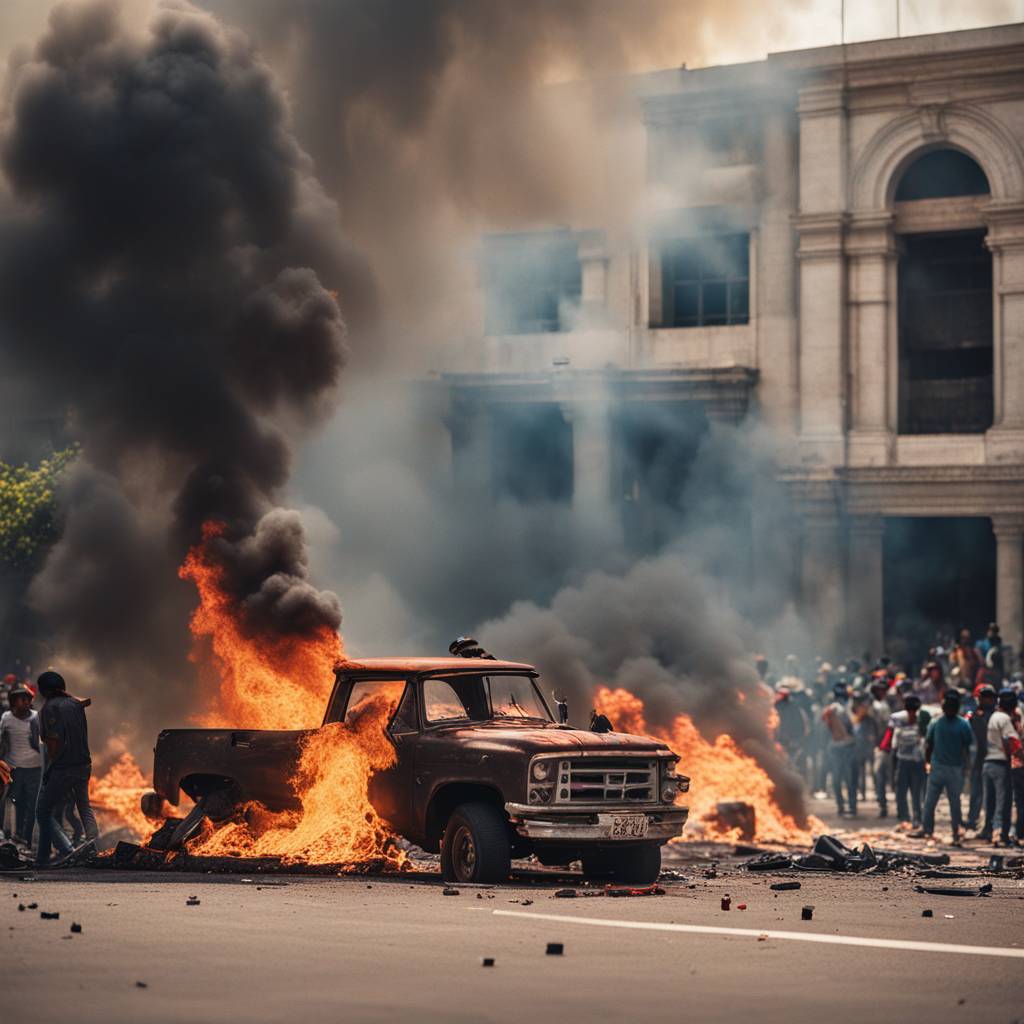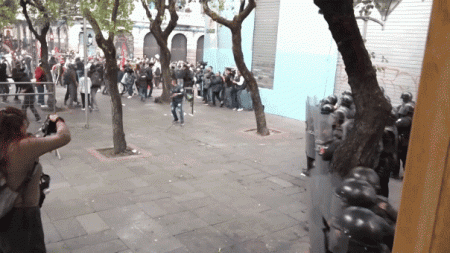Protesters in Chilpancingo, Guerrero, Mexico set fire to the state government building and torched at least a dozen cars in the parking lot. The protests were sparked by demands for answers in the case of 43 students from a rural teachers college who disappeared in 2014, with another student from the same college killed in a police confrontation in March. The Guerrero state government issued a statement expressing regret and condemning the violence, noting that the state interior secretary had resigned following the March incident and that police officers involved were under investigation. Images from the protests showed multiple vehicles on fire and flames coming out of the state office building, which houses the governor’s office.
The students at the Ayotzinapa teachers’ college, known for their violent protests, have been involved in similar incidents in the past, such as hijacking buses and delivery trucks. In a previous demonstration in March, protesters rammed a pickup truck into the doors of Mexico City’s National Palace, where the president resides and conducts daily press briefings. The protesters managed to enter the historic palace, dating back to the 1700s and built on the site of the Aztec emperors’ palace, before being driven off by security agents. These protests were in response to the abduction and murder of 43 students a decade ago, an infamous human rights case in Mexico.
The 2014 attack on the students in Iguala, Guerrero, involved municipal police handing them over to a local drug gang, who allegedly killed and burned their bodies. This incident led to widespread outrage and raised questions about the complicity of local, state, and federal authorities in what was deemed a “state crime” by a government truth commission. Despite initial attempts to cover up the events, only three sets of remains have been identified since the attack, leaving many unanswered questions about the fate of the missing students. The radical rural teachers’ colleges in Mexico have a history of engaging in violent protests, with the abducted students reportedly planning to use hijacked buses for another demonstration at the time of their disappearance.
The ongoing protests and violent actions in Chilpancingo reflect the deep-seated anger and frustration among the local population over the unresolved disappearance of the 43 students and the lack of accountability for those responsible. The burning of the state government building and destruction of vehicles are symbolic gestures of resistance against a government that has failed to provide justice and closure to the families of the missing students. The continued support for the Ayotzinapa teachers’ college and its students from various activist groups and communities underscores the widespread solidarity and commitment to seeking truth and accountability in the face of state-sanctioned violence and corruption. The persistence of these protests highlights the ongoing struggle for justice and human rights in Mexico, where impunity and political complicity often overshadow the demands of marginalized and oppressed communities.













